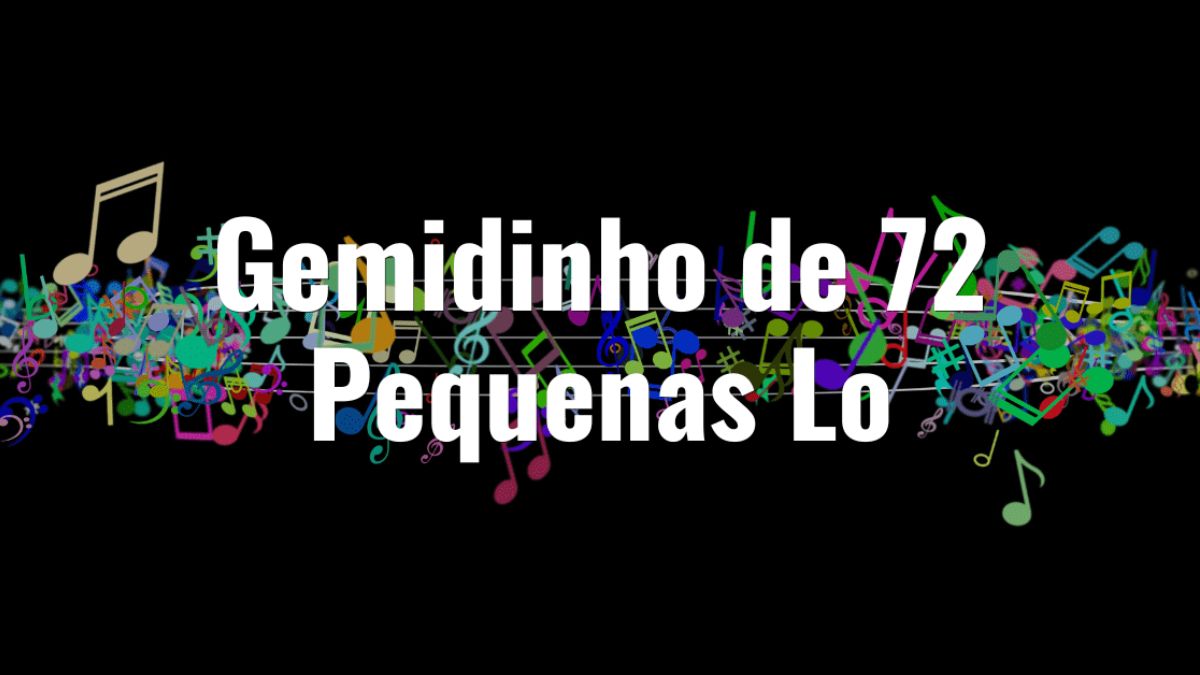Entertainment
Analyzing the Dark Depths of “Serial Killer Isekai Ni Oritatsu Chapter 7”

Chapter Overview
In “Serial Killer Isekai Ni Oritatsu Chapter 7,” we delve deeper into the psyche of our protagonist, Shinji, and examine the brutal acts committed by the serial killer. This chapter is a chilling exhibition of the killer’s cunning and ruthlessness, as Shinji encounters new characters and their lives become intricately intertwined with his. The author masterfully parallels the fictional killer’s methods and motivations with those of notorious real-life serial killers, providing readers insight into the dark recesses of a murderous mind. Brace yourselves for an in-depth analysis that explores the brutality, new character dynamics, real-life parallels, and the suspense that drives this gripping narrative.
The Brutality of the Serial Killer
Vivid Portrayal of Dark Deeds
Chapter 7 of “Serial Killer Isekai Ni Oritatsu” vividly portrays the heinous crimes committed by the serial killer. The author spares no detail in depicting the gruesome acts, emphasizing the chilling nature of the murders. This meticulous description serves to immerse readers in the horror and brutality of the killer’s actions.
The Killer’s Cunning and Ruthlessness
The chapter highlights the cunning and ruthlessness of the serial killer as he continues his spree in the fantastical realm. His calculated moves and lack of remorse paint a terrifying picture of a predator who thrives on chaos and fear. This portrayal not only adds depth to the character but also keeps readers on the edge of their seats, wondering what his next move will be.
New Characters and Entanglements
Introduction of New Individuals
In this chapter, Shinji encounters new characters who play significant roles in the unfolding events. These individuals are not mere bystanders; their interactions with Shinji and the serial killer have profound implications for the narrative. Their introduction enriches the story, adding new layers of complexity and intrigue.
Intersecting Lives and Unexpected Consequences
The lives of these new characters become entangled with the serial killer’s, leading to unexpected consequences. Their reactions to the killer—ranging from fear to fascination—add depth to the narrative and highlight the multifaceted nature of human emotions. This interplay between the characters keeps readers engaged and eager to see how their fates unfold.
Parallels with Real-Life Killers
Notorious Real-Life Killers
One of the most compelling aspects of Chapter 7 is its clever drawing of parallels with notorious real-life serial killers. By examining the motivations and methods of these historical figures, the author provides readers with a deeper understanding of the fictional killer’s psyche. This comparison not only grounds the story in reality but also adds a layer of authenticity to the narrative.
Exploring Motivations and Methods
The story delves into the motivations behind the killer’s actions, exploring themes of betrayal, redemption, and consequence. By examining these motivations, readers gain insight into what drives someone to commit such heinous acts. This exploration keeps readers engaged, as they are constantly seeking to understand the mind of the killer.
Suspense Unraveled
A Deadly Game of Cat and Mouse
As the serial killer’s identity unravels, the suspense in Chapter 7 reaches new heights. Readers are left on the edge of their seats, eagerly awaiting the next twist in this deadly game of cat and mouse. The tension between Shinji, the serial killer, and the Dark Lord intensifies, promising more suspense and surprises in the chapters to come.
Promising More Suspense and Surprises
The chapter ends on a tantalizing note, leaving readers hungry for more. The promise of future twists and turns keeps readers hooked, ensuring they will continue to follow the story with bated breath. The skillful buildup of suspense is a testament to the author’s mastery of the horror and mystery genres.
A Deeper Dive into Chapter 7’s Themes
The Nature of Evil
One of the central themes in Chapter 7 is the nature of evil. Through the actions of the serial killer and the reactions of the new characters, the story probes into what it means to be evil. Is evil inherent, or is it a result of circumstances and choices? This theme is explored through the lens of both the fantastical realm and real-life comparisons, offering readers a thought-provoking look at the darker side of human nature.
Human Fascination with the Macabre
Another theme that emerges in this chapter is the human fascination with the macabre. The new characters’ reactions to the serial killer—ranging from fear to morbid curiosity—reflect this fascination. This theme is particularly relevant in today’s society, where true crime stories and horror fiction captivate audiences worldwide. The author taps into this fascination, making the story both engaging and relatable.
The Duality of Fear and Curiosity
Fear and curiosity are two sides of the same coin, and Chapter 7 masterfully explores this duality. The new characters’ interactions with the serial killer are driven by both fear and curiosity, creating a complex dynamic that adds depth to the narrative. This exploration of fear and curiosity keeps readers invested in the story, as they navigate their own emotions alongside the characters’.
The Importance of Realism in Horror Fiction
Grounding the Story in Reality
One of the reasons “Serial Killer Isekai Ni Oritatsu” is so compelling is its grounding in reality. By drawing parallels with real-life serial killers, the author adds a layer of authenticity to the story. This realism makes the horror elements more effective, as readers can easily imagine the events happening in the real world.
Enhancing Reader Engagement
The realistic elements of the story also enhance reader engagement. By providing a believable backdrop for the fantastical events, the author ensures that readers remain immersed in the narrative. This engagement is crucial for maintaining suspense and keeping readers invested in the outcome of the story.
YOU MAY ALSO LIKE
Dungeon Crawling Adventure: The Warrior High School
Conclusion: A Masterful Blend of Horror and Mystery
Chapter 7 of “Serial Killer Isekai Ni Oritatsu” is a masterful blend of horror and mystery. The vivid portrayal of the serial killer’s brutality, the introduction of new characters, the exploration of real-life parallels, and the skillful buildup of suspense all contribute to a gripping narrative that keeps readers on the edge of their seats. As the story continues to unfold, readers can expect more twists, turns, and chilling revelations.
Final Thoughts
For fans of horror and mystery fiction, “Serial Killer Isekai Ni Oritatsu” offers a captivating and thought-provoking reading experience. Chapter 7 delivers on both fronts, providing a deeper understanding of the protagonist’s twisted mind and setting the stage for future suspense. As you continue to follow Shinji’s journey, remember to enjoy the ride—and keep an eye out for the unexpected.
Call to Action
If you’re as intrigued by this story as we are, be sure to stay tuned for upcoming chapters. And if you haven’t already, catch up on the previous chapters to fully appreciate the depth and complexity of this dark tale. Happy reading, fellow horror enthusiasts!
Frequently Asked Questions (FAQs)
1. What is “Serial Killer Isekai Ni Oritatsu” about?
“Serial Killer Isekai Ni Oritatsu” is a horror-mystery novel that follows the actions and motivations of a serial killer in a fantastical realm.
2. How does the story draw parallels with real-life serial killers?
The author examines the motivations and methods of notorious real-life killers to provide a deeper understanding of the fictional killer’s psyche.
3. What themes are explored in Chapter 7?
Chapter 7 explores themes such as the nature of evil, human fascination with the macabre, and the duality of fear and curiosity.
4. Why is realism important in the story?
Realism grounds the fantastical elements in reality, making the horror more effective and enhancing reader engagement.
5. What should readers expect in future chapters?
Readers can expect more twists, turns, and chilling revelations as the story continues to unfold with heightened suspense.
Entertainment
The Mystical Journey of Gemidinho de 72 Pequenas Lo

In the rich tapestry of cultural heritage, few threads are as intricate and colorful as “Gemidinho de 72 Pequenas Lo.” This enigmatic phrase has piqued the curiosity of music enthusiasts, cultural heritage advocates, and travel lovers alike, offering a unique blend of musical magic and cultural depth. Whether you’re drawn to its haunting melodies or the stories woven into its very name, this post promises to unravel the enigma of “Gemidinho de 72 Pequenas Lo” and reveal the many layers of its allure.
The Rooted Legacy of Gemidinho de 72 Pequenas Lo
The mystique of “Gemidinho de 72 Pequenas Lo” is deeply rooted in Afro-Brazilian culture, a profound element of Brazil’s vibrant heritage. This composition stands as a testament to the enduring influence of African rhythms and traditions that have been carried through generations. In the lively streets and quaint villages of Brazil, this piece is more than just music; it is a living, breathing artifact that encapsulates the essence of a people’s history and soul.
For those who immerse themselves in the study of cultural heritage, “Gemidinho de 72 Pequenas Lo” offers a fascinating glimpse into the syncretic blending of cultures. The music reflects the resilience and creativity of those who crafted it, echoing tales of triumph and endurance. It serves as a reminder of the power of art to transcend boundaries, connecting people across time and space.
The cultural significance of “Gemidinho de 72 Pequenas Lo” is evidenced by its continued influence in modern Brazilian society. Whether it’s the rhythmic beats that accompany traditional dances or the soulful melodies that resonate in local festivals, this musical composition continues to be a dynamic force that shapes and enriches the cultural landscape of Brazil.
Decoding the Poetic Title
At first glance, “Gemidinho de 72 Pequenas Lo” might appear cryptic, yet it carries a lyrical and mysterious charm. Translated directly, it means “Little Moan of 72 Little Lo,” a phrase that evokes both curiosity and intrigue. The poetic nature of the title suggests layers of meaning waiting to be discovered, much like the music itself.
This blend of whimsy and depth is a hallmark of the piece’s appeal. For some, the title conjures images of delicate, ethereal sounds—a soft whisper of music that gently unfolds its secrets. For others, it hints at the profound emotional nuances that lie within, inviting listeners to explore their interpretations and connections.
The beauty of this enigmatic title lies in its capacity to evoke personal reflection and imagination. Like a riddle or a poem, it invites deeper engagement, encouraging music lovers to listen with open hearts and minds, ready to uncover the layers of story and emotion encapsulated within each note.
Alejandro Montoya’s Masterpiece
The genius behind “Gemidinho de 72 Pequenas Lo” is Alejandro Montoya, a composer celebrated for his intricate orchestration and emotional depth. His work on this piece exemplifies his ability to weave together complex musical elements, creating a tapestry of sound that captivates and moves audiences worldwide.
Montoya’s composition stands out for its sophisticated structure, where each instrument plays a crucial role in building the overall narrative. The interplay between strings and percussion, the subtle nuances of woodwinds, and the powerful crescendos of brass all contribute to a rich, immersive experience. It’s a masterclass in balancing complexity with accessibility, inviting listeners to lose themselves in its enchanting depths.
The emotional resonance of “Gemidinho de 72 Pequenas Lo” is perhaps its most striking feature. Montoya’s music speaks to universal themes of longing, joy, sorrow, and hope, transcending language and cultural barriers. It’s a testament to the power of music to communicate what words alone cannot—a profound connection between composer, performer, and audience.
A Traditional Craft from Rural Brazil
Beyond its musical attributes, “Gemidinho de 72 Pequenas Lo” is also a traditional craft that has its roots in rural Brazil. This fascinating aspect of the piece involves intricate weaving techniques used to create miniature sculptures and artifacts. These handcrafted items often accompany the musical experience, adding a tactile dimension to the auditory delight.
The meticulous process of creating these miniatures is an art form in itself, requiring patience, precision, and a deep understanding of traditional methods. Each piece tells a story, reflecting the culture and history of its origin. The miniatures often depict scenes of everyday life or abstract concepts, serving as a visual representation of the themes explored in the music.
For cultural heritage advocates, this craft represents a vital link to the past, preserving skills and knowledge that have been passed down through generations. It also provides an opportunity for rural communities to share their artistry with a broader audience, fostering economic growth and cultural exchange.
The Unique Housing Complex
In a surprising twist, “Gemidinho de 72 Pequenas Lo” also refers to a recently launched housing complex in Brazil. Built on a former landfill, this development features 72 compact homes, each designed with sustainability and community in mind. It stands as a symbol of transformation and renewal, echoing the themes found in the musical composition.
The housing complex is a testament to innovative design and urban regeneration. By repurposing a site that was once considered uninhabitable, the project demonstrates the potential for creativity and vision to overcome challenges. It’s a beacon of hope for sustainable development, offering a model for other communities around the world.
Residents of the complex enjoy a vibrant community atmosphere, with shared spaces and amenities that encourage interaction and collaboration. The development has become a hub for cultural activities and local events, further enriching the lives of those who call it home.
The Mesmerizing Effect of the Music
When the notes of “Gemidinho de 72 Pequenas Lo” begin to play, listeners are transported to a world of enchantment and wonder. The music has a mesmerizing effect, drawing audiences in with its haunting melodies and intricate harmonies. It’s a sonic experience that lingers long after the final note has faded.
Many describe the sensation of listening to this piece as akin to being wrapped in a warm, comforting embrace. The music has the power to evoke deep emotions, stirring memories and dreams in equal measure. It’s a testament to the skill of the composer and performers, who bring each note to life with passion and precision.
For those who experience “Gemidinho de 72 Pequenas Lo” in a live setting, the effect is even more profound. The energy and connection between musicians and audience create a shared moment of beauty and transcendence—a reminder of the universal language of music.
Exploring the Allure
The allure of “Gemidinho de 72 Pequenas Lo” lies in its ability to captivate the imagination and touch the soul. It is a work that defies easy categorization, blending elements of music, art, and culture into a seamless whole. Whether you are drawn by its mysterious title, its rich musicality, or its cultural significance, there is something within this piece for everyone to discover and cherish.
Music enthusiasts will find joy in its complex harmonies and melodies, while cultural advocates will appreciate its role in preserving and celebrating Afro-Brazilian heritage. Travel lovers, too, may be inspired to explore the landscapes and communities that have nurtured this remarkable work.
Ultimately, “Gemidinho de 72 Pequenas Lo” is an invitation to explore the depths of our shared human experience. It challenges us to look beyond the surface, to seek out the stories and connections that lie beneath. In doing so, it enriches our understanding of the world and our place within it.
YOU MAY ALSO LIKE
Following His Dream Yoosung’s Journey in Shoot for the Stars Manga
Conclusion
“Gemidinho de 72 Pequenas Lo” stands as a multifaceted gem in the world of art and culture. Its layers of meaning and expression offer endless avenues for exploration and enjoyment, making it a true treasure for music enthusiasts, cultural advocates, and curious travelers alike.
The piece’s rich history and contemporary relevance underscore the enduring power of creative expression to connect, inspire, and transform. Whether through its haunting melodies, intricate crafts, or innovative housing complex, “Gemidinho de 72 Pequenas Lo” continues to capture the hearts and minds of those who encounter it.
As you reflect on the insights shared in this post, consider how you might further engage with the themes and stories explored within this enigmatic work. Whether by attending a performance, visiting the housing complex, or exploring similar cultural expressions in your community, there are countless ways to deepen your appreciation and support of this captivating piece and the rich cultural heritage it represents.
Frequently Asked Questions (FAQs)
- What is “Gemidinho de 72 Pequenas Lo”?
- “Gemidinho de 72 Pequenas Lo” is a musical composition that intertwines intricate melodies with cultural significance, reflecting Afro-Brazilian heritage.
- What is the significance of the housing complex?
- The housing complex represents sustainability and community, built on a former landfill, showcasing innovation and urban regeneration.
- How does the music evoke emotions?
- The piece captivates listeners with its haunting melodies, creating a comforting atmosphere that stirs deep emotions and memories.
- What role do the miniatures play in this project?
- The handcrafted miniatures enhance the musical experience, preserving traditional crafts and reflecting the culture and history of their origins.
- Why is this work important for cultural advocates?
- It serves as a vital link to preserving skills and cultural heritage while promoting economic growth and cultural exchange in rural communities.
Entertainment
The Intricacies of Semantic Error Chapter 79 Unveiled

Introduction
Imagine you’re a coder meticulously crafting a perfect program. You’ve checked your syntax, ensured there are no typos, and everything seems flawless. Yet, when you run the program, something goes awry. What you’re encountering is a semantic error—an error in logic rather than language. Similarly, in the world of manga, “Semantic Error” explores these intricate issues through captivating storytelling. This blog post will take a deep dive into Semantic Error Chapter 79, unraveling its complexities and extracting valuable lessons for novice coders and programming enthusiasts.
In this post, you’ll discover the layers of narrative woven into Chapter 79, how it mirrors real-life programming challenges, and why it’s a treasure trove for anyone interested in tech. We’ll break down key themes, character developments, and the underlying messages that make this chapter a must-read for both manga fans and aspiring coders.
Prepare to be immersed in a world where romance meets resilience, and learn why meticulous attention to detail is crucial in both coding and life.
The Essence of Semantic Errors in Programming
What is a Semantic Error?
In coding, semantic errors occur when the syntax is correct, but the logic behind the code is flawed. It’s like saying, “The car eats quickly.” The sentence is grammatically correct but logically makes no sense. In programming, semantic errors can lead to unexpected behaviors, crashes, or incorrect outputs. Detecting and fixing these errors requires a deep understanding of the code’s intended functionality.
Real-Life Examples
Consider a simple example where a programmer intends to add two numbers but instead multiplies them. The syntax is correct, but the logic is flawed. Another example could be using an incorrect variable name that leads to unexpected results. These errors can be elusive and time-consuming to debug, making them a significant challenge for novice coders.
The Importance of Testing
Thorough testing is crucial for identifying and resolving semantic errors. Unit tests, integration tests, and user acceptance tests can help ensure that the code performs as expected under various conditions. Rigorous debugging and code reviews are also essential practices for maintaining code quality and reliability.
An Overview of Semantic Error Chapter 79
A Cautionary Tale
Semantic Error Chapter 79 serves as a cautionary tale, highlighting the importance of thorough testing, rigorous debugging, and meticulous attention to detail. The chapter mirrors the challenges faced by programmers in identifying and resolving semantic errors, making it a valuable resource for novice coders.
Key Themes
The chapter explores themes of resilience, problem-solving, and the relentless pursuit of perfection. These themes align closely with the experiences of programmers who must continually refine their skills and knowledge to overcome coding challenges.
Narrative Structure
The narrative structure of Chapter 79 is intricate and well-crafted, drawing readers into a compelling story that resonates with anyone who has faced the frustrations of debugging code. The chapter’s pacing and character development keep readers engaged while providing valuable insights into the complexities of semantic errors.
Character Developments in Chapter 79
Sangwoo Choo
Sangwoo Choo is a stickler for rules and a perfectionist. His character embodies the meticulous nature required for successful programming. In Chapter 79, Sangwoo faces challenges that test his problem-solving abilities and resilience, drawing parallels to coders who must overcome semantic errors.
Other Key Characters
The chapter also introduces other key characters who contribute to the narrative’s depth and complexity. Their interactions with Sangwoo highlight the importance of collaboration and communication in both coding and life. These character dynamics add richness to the story while reinforcing the chapter’s central themes.
Emotional Resonance
The emotional resonance of Chapter 79 is one of its standout features. The characters’ struggles and triumphs evoke a range of emotions, making the chapter relatable and impactful. This emotional depth enhances the reader’s connection to the story and its underlying messages.
Lessons for Novice Coders
Meticulous Attention to Detail
One of the key takeaways from Chapter 79 is the importance of meticulous attention to detail. Just as Sangwoo must carefully analyze his situation, novice coders must thoroughly review their code to identify and resolve semantic errors. Attention to detail can make the difference between a functioning program and one that fails.
Resilience and Persistence
Chapter 79 highlights the value of resilience and persistence in overcoming challenges. In programming, encountering and resolving semantic errors requires patience and determination. Coders must be willing to persevere through frustrations and setbacks to achieve their goals.
Collaboration and Communication
The interactions between characters in Chapter 79 underscore the importance of collaboration and communication. In coding, teamwork and effective communication are essential for identifying and resolving issues. Sharing knowledge and working together can lead to more efficient problem-solving and better outcomes.
The Role of Romance and Resilience
A Tapestry of Emotion
Semantic Error Chapter 79 is not just a manga; it’s an intricate tapestry spun with the yarns of romance, resilience, and the relentless pursuit of perfection. The chapter weaves these elements together to create a story that resonates deeply with readers, particularly those who understand the challenges of programming.
The Intersection of Romance and Coding
The chapter explores the intersection of romance and coding, illustrating how personal relationships can influence and be influenced by one’s professional pursuits. This theme adds an additional layer of complexity to the story, making it both relatable and thought-provoking.
The Pursuit of Perfection
At its core, Chapter 79 is about the pursuit of perfection. This theme is reflected in both the narrative and the characters’ experiences, drawing parallels to the coder’s quest for flawless code. The chapter’s exploration of this theme offers valuable insights for anyone striving for excellence in their endeavors.
The Complexity of Semantic Errors
Unraveling the Complexities
Chapter 79 unravels the complexities surrounding semantic errors in programming, serving as a valuable resource for novice coders seeking to understand and resolve these issues. The chapter’s detailed exploration of semantic errors provides practical insights and guidance for aspiring programmers.
Practical Examples
The chapter includes practical examples that illustrate the nature of semantic errors and how they can be resolved. These examples offer valuable learning opportunities for novice coders, helping them develop the skills and knowledge needed to tackle semantic errors in their own code.
A Valuable Resource
Overall, Chapter 79 is a valuable resource for anyone interested in programming and coding. Its detailed exploration of semantic errors, combined with its engaging narrative, makes it an essential read for novice coders and programming enthusiasts.
Thematic Insights from Chapter 79
Resilience in Coding
One of the key themes of Chapter 79 is resilience. The characters’ experiences mirror the challenges faced by coders who must persevere through the frustrations of debugging and resolving semantic errors. This theme offers valuable insights for anyone striving to improve their coding skills.
The Value of Collaboration
Another important theme is the value of collaboration. The interactions between characters highlight the importance of teamwork and effective communication in coding. Sharing knowledge and working together can lead to more efficient problem-solving and better outcomes.
The Pursuit of Excellence
Finally, Chapter 79 explores the pursuit of excellence. This theme is reflected in both the narrative and the characters’ experiences, drawing parallels to the coder’s quest for flawless code. The chapter’s exploration of this theme offers valuable insights for anyone striving for excellence in their endeavors.
The Art of Debugging
Identifying Semantic Errors
Debugging is an essential skill for any coder. In Chapter 79, the characters’ experiences provide valuable insights into the art of debugging and identifying semantic errors. These insights can help novice coders develop the skills needed to tackle semantic errors in their own code.
Tools and Techniques
The chapter also explores various tools and techniques for debugging code. From unit tests to integration tests, these methods can help coders identify and resolve semantic errors more efficiently. Understanding these tools and techniques is crucial for maintaining code quality and reliability.
A Continuous Process
Debugging is a continuous process that requires patience and persistence. Chapter 79 highlights the importance of perseverance in overcoming coding challenges. This lesson is invaluable for novice coders seeking to improve their skills and achieve their goals.
The Impact of Semantic Errors
Real-World Consequences
Semantic errors can have significant real-world consequences. From software crashes to incorrect outputs, these errors can undermine the reliability and functionality of a program. Understanding the impact of semantic errors is crucial for anyone involved in coding and programming.
Case Studies
Chapter 79 includes case studies that illustrate the real-world impact of semantic errors. These examples provide valuable learning opportunities for novice coders, helping them understand the importance of identifying and resolving semantic errors.
Preventative Measures
The chapter also explores preventative measures for minimizing the risk of semantic errors. From thorough testing to code reviews, these practices can help ensure that code performs as expected under various conditions. Adopting these measures is essential for maintaining code quality and reliability.
The Role of Testing in Coding
Types of Tests
Testing is a critical component of the coding process. Chapter 79 explores various types of tests, including unit tests, integration tests, and user acceptance tests. Understanding these tests is crucial for identifying and resolving semantic errors.
Best Practices
The chapter also outlines best practices for testing code. From writing clear and concise test cases to automating repetitive tests, these practices can help ensure that code performs as expected. Adopting these best practices is essential for maintaining code quality and reliability.
Continuous Improvement
Testing is an ongoing process that requires continuous improvement. Chapter 79 highlights the importance of regularly updating and refining test cases to keep pace with changing requirements. This lesson is invaluable for novice coders seeking to improve their testing skills and maintain code quality.
The Future of Semantic Error
Emerging Trends
The future of semantic error management is evolving rapidly. Chapter 79 explores emerging trends in this field, including advancements in AI and machine learning that can help identify and resolve semantic errors more efficiently. Staying informed about these trends is crucial for anyone involved in coding and programming.
Innovations in Tools
The chapter also highlights innovations in tools and technologies for managing semantic errors. From automated debugging tools to advanced testing frameworks, these innovations are revolutionizing the way coders identify and resolve semantic errors.
Preparing for the Future
Preparing for the future of semantic error management requires a commitment to continuous learning and improvement. Chapter 79 underscores the importance of staying informed about emerging trends and innovations in this field. This lesson is invaluable for novice coders seeking to stay ahead of the curve and succeed in their coding endeavors.
YOU MAY ALSO LIKE
Journey into the Enigmatic World of The Grand Duke Is Mine Spoilers
Conclusion
Semantic Error Chapter 79 is a rich tapestry of narrative and technical insights, offering valuable lessons for novice coders and programming enthusiasts alike. From understanding the nature of semantic errors to exploring the importance of testing and collaboration, this chapter provides a comprehensive guide for anyone involved in coding and programming.
By unraveling the complexities of semantic errors, Chapter 79 serves as a valuable resource for anyone seeking to improve their coding skills and achieve their goals. Whether you’re a novice coder just starting out or an experienced programmer looking to stay ahead of the curve, this chapter offers valuable insights and practical tips for navigating the challenges of coding.
Take the lessons from Chapter 79 to heart and apply them to your own coding endeavors. With resilience, attention to detail, and a commitment to continuous improvement, you can overcome the challenges of semantic errors and achieve your coding goals. Happy coding!
Frequently Asked Questions (FAQs)
- What are semantic errors in coding?
Semantic errors occur when the code runs without crashing, but produces incorrect results due to flawed logic or meaning.
- How can I identify semantic errors?
Identifying semantic errors involves careful code review, testing different scenarios, and using debugging tools to trace the logic.
- What tools can help with debugging?
Common debugging tools include integrated development environments (IDEs), unit testing frameworks, and static code analysis tools.
- Why are tests important in coding?
Tests help ensure the code behaves as expected, identifies issues early, and improves overall code reliability and quality.
- What are best practices for writing test cases?
Best practices include writing clear, concise test cases, covering edge cases, and automating repetitive tests for efficiency.
Entertainment
Journey into the Enigmatic World of The Grand Duke Is Mine Spoilers

Introduction
In a world where tales of nobility intertwine with captivating romances and unexpected twists, “The Grand Duke Is Mine” stands as a beacon. This story has quickly captured the hearts of book lovers, film enthusiasts, and storytelling aficionados alike. Whether you’ve flipped through its pages or seen it come to life on screen, there’s no denying its magnetic appeal.
This blog post aims to unravel the intricate tapestry of “The Grand Duke Is Mine”. We’ll explore the plot’s essence, dissect key moments and twists, analyze character growth, and uncover underlying themes. Warning, dear reader, spoilers lie ahead for those who haven’t yet delved into this mesmerizing narrative.
Plot Summary (Brief, Spoiler-Free)
Basic Premise of the Story
At its core, “The Grand Duke Is Mine” is a tale of love, loyalty, and the unpredictable nature of fate. The narrative follows the life of Lady Lucy, a young woman with dreams that stretch beyond the confines of her aristocratic upbringing.
Main Characters and Their Roles
Lady Lucy is our protagonist, a spirited and intelligent young woman who dreams of a life filled with purpose. Her path crosses with Grand Duke Alexander, a man shrouded in mystery and burdened by his own past. Supporting characters like Lady Margaret, Lucy’s close friend, and Count Dimitri, Alexander’s confidant, add depth and dimension to the story.
Setting and Time Period
Set against the backdrop of 19th-century Europe, the story paints vivid pictures of grand ballrooms, lush countryside estates, and the societal norms of the time. The historical setting plays a crucial role in shaping the characters’ lives and the choices they make.
Major Plot Points and Twists
Breakdown of Key Events in the Story
The story kicks off with Lady Lucy attending a ball in the hopes of meeting suitors. However, her plans take an unexpected turn when she catches the eye of Grand Duke Alexander. Their chance encounter sets off a series of events that change the course of their lives.
Introduction of Significant Conflicts and Challenges
Lucy finds herself torn between her duty to her family and her burgeoning feelings for Alexander. Meanwhile, Alexander grapples with secrets from his past that threaten to unravel everything he holds dear. Their love story is fraught with obstacles, from societal expectations to personal demons.
Revelation of Unexpected Plot Twists
Just when it seems like Lucy and Alexander might find happiness, a shocking revelation about Alexander’s lineage throws their relationship into turmoil. This bombshell forces both characters to confront their deepest fears and desires, leading to a heart-wrenching climax.
Character Development
Analysis of Character Arcs and Transformations
Lady Lucy starts as a somewhat naive young woman but grows into a strong, independent figure. Her experiences and trials shape her into someone capable of making tough decisions. Grand Duke Alexander also undergoes significant development, evolving from a guarded and mysterious figure to someone open and vulnerable.
Exploration of Character Relationships and Dynamics
The relationship between Lucy and Alexander is the story’s heartbeat. Their dynamic is complex, filled with moments of tenderness and tension. The secondary characters, like Lady Margaret and Count Dimitri, provide additional layers, each influencing the main characters in profound ways.
Discussion of Character Motivations and Actions
Lucy’s motivation stems from her desire for a life of meaning and love. Alexander, on the other hand, seeks redemption and acceptance. Their actions, driven by these motivations, lead to crucial turning points in the narrative, emphasizing the story’s emotional depth.
Themes and Messages
Identification of Underlying Themes in the Story
At its core, “The Grand Duke Is Mine” explores themes of love, redemption, and societal expectations. The story questions the constraints placed on individuals by society, highlighting the struggle between personal desires and societal duty.
Examination of the Author’s Message or Intent
The author seems intent on showcasing the power of love to transcend societal boundaries and personal demons. Through Lucy and Alexander’s journey, we see how love can be both a source of strength and vulnerability.
Analysis of How the Themes Contribute to the Overall Narrative
The themes of love and redemption are woven seamlessly into the narrative, driving the characters’ actions and decisions. These themes add layers of complexity to the story, making it more than just a simple romance, but a profound exploration of human emotions and societal norms.
Criticisms and Controversies
Discussion of Any Negative Feedback or Controversies Surrounding the Story
Like any popular work, “The Grand Duke Is Mine” has faced its share of criticisms. Some readers argue that the plot relies too heavily on clichés, while others feel certain character arcs are underdeveloped.
Analysis of the Validity of Criticisms
While some critiques hold merit, such as the occasional predictability of certain plot points, the story’s strengths often overshadow these minor flaws. The emotional depth and well-crafted characters provide a compelling experience that keeps readers hooked.
Addressing Potential Counterarguments
For every criticism, there are numerous readers who praise the story’s ability to evoke strong emotions and create a vivid world. The nuanced portrayal of the central romance and the historical accuracy add to its charm, making it a beloved tale for many.
YOU MAY ALSO LIKE
The Untold Tale of Beth Grosshans Husband and Their Enigmatic Love Story
Conclusion
Recap of the Main Points Discussed
“The Grand Duke Is Mine” offers a rich tapestry of love, conflict, and redemption. From its intricate plot to its well-developed characters, the story captivates on multiple levels.
Final Thoughts or Opinions About the Story
Despite some minor criticisms, it remains a powerful narrative that resonates with readers of all ages. Its exploration of universal themes and human emotions makes it a timeless piece.
Encourage Readers to Share Their Own Thoughts and Interpretations
What are your thoughts on “The Grand Duke Is Mine”? Did the plot twists leave you breathless, or did the character arcs resonate deeply with you? Share your interpretations and join the conversation in the comments below!
Frequently Asked Questions (FAQs)
1. What is the main theme of “The Grand Duke Is Mine”?
The main themes revolve around love, redemption, and the conflict between societal expectations and personal desires.
2. Who are the main characters in the story?
The primary characters are Lady Lucy and Grand Duke Alexander, each facing personal challenges that shape their journey.
3. How does the setting influence the plot?
Set in 19th-century Europe, the historical context deeply influences characters’ choices and the societal norms they navigate.
4. What are some criticisms of the book?
Some readers feel the plot relies on clichés and certain character arcs are underdeveloped, though many appreciate the emotional depth.
5. How does the author convey the characters’ transformation?
The author illustrates character growth through their experiences, showcasing how challenges lead Lucy and Alexander to personal strength and vulnerability.
-

 Fashion7 months ago
Fashion7 months agoThe Rise of λιβαισ in Sustainable Living
-

 Blog4 months ago
Blog4 months agoWhat Happened to MyCheckFree? A Comprehensive Guide for Former Users
-

 Technology7 months ago
Technology7 months agoWavr-297: A Transformative Audio Technology
-

 Blog6 months ago
Blog6 months agoMerchant Cash Advance Blursoft: Quick, Flexible Business Financing
-

 Lifestyle6 months ago
Lifestyle6 months ago92Career: Your One-Stop Shop for Career Success
-

 Technology7 months ago
Technology7 months agoUnveiling the Magic: A Deep Dive into Geöe
-

 Business6 months ago
Business6 months agoStrategic Capital Injection for Business Owners: A Comprehensive Guide
-

 Technology6 months ago
Technology6 months agoMahimagicdoll999999 Archives: A Digital Wonderland for Creatives





